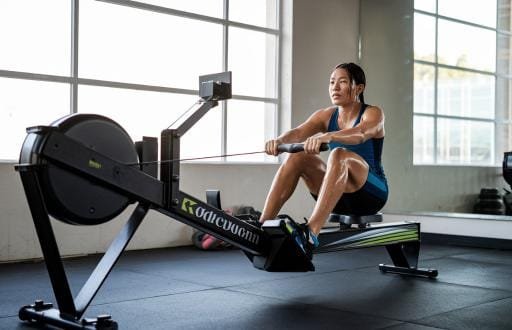Sweat from Home Without Breaking the Bank: Essential Gear for Your Budget-Friendly Home Gym
In the ever-evolving landscape of American fitness culture, the allure of the home gym has skyrocketed, transforming spare rooms and garage corners into personal temples of physical prowess. Yet, for many, the notion of a fully-equipped workout space conjures images of bank-breaking investments and complicated machinery. Fear not, aspiring home athletes! The path to fitness nirvana needn’t be paved with gold-plated dumbbells or treadmills that cost more than a used car.
The beauty of crafting a budget-friendly home gym lies in its inherent simplicity and creativity. It’s about reimagining everyday objects as fitness tools and understanding that effective workouts don’t necessarily require state-of-the-art equipment. In fact, some of the most potent exercises rely solely on body weight and gravity – two resources that come absolutely free of charge.
Let’s dive into the essentials, shall we? First up: resistance bands. These unassuming rubber strips are the chameleons of the fitness world, capable of mimicking exercises typically reserved for bulky, expensive machines. From bicep curls to chest presses, leg extensions to lat pulldowns, a good set of resistance bands can provide a full-body workout that rivals any gym setup. And the best part? They can be tucked away in a drawer when not in use, making them perfect for those whose “gym” doubles as a living space.
Next on our list is the humble yoga mat. Don’t be fooled by its association with zen-like poses and deep breathing exercises. A quality yoga mat serves as the foundation for a myriad of floor exercises, providing cushioning for push-ups, planks, and core work. It’s also an excellent investment for those high-intensity interval training (HIIT) sessions that have taken the fitness world by storm. Look for mats with good grip and durability – your joints will thank you during those burpee marathons.
Now, let’s talk weights. While a full rack of dumbbells might be the dream, it’s not always practical (or affordable) for the home gym enthusiast. Enter adjustable dumbbells – the shape-shifters of strength training. These ingenious devices allow you to change the weight with a simple twist or click, effectively giving you a full set of weights in one compact package. They might cost more upfront than a single pair of traditional dumbbells, but the versatility they offer makes them worth their weight in gold (pun absolutely intended).
For those craving a cardio fix without the hefty price tag of a treadmill, consider the jump rope. This playground staple has undergone a fitness renaissance, proving that sometimes the simplest tools offer the most bang for your buck. A 10-minute jump rope session can torch calories and improve cardiovascular health as effectively as a 30-minute jog. Plus, it takes up virtually no space and can be used indoors or out – perfect for those unpredictable weather days.
Let’s not forget the pull-up bar – the unsung hero of upper body workouts. While the thought of installing equipment might send shivers down the spines of renters and DIY-phobes alike, many modern pull-up bars require no permanent fixtures. They simply leverage the doorframe, providing a stable platform for pull-ups, chin-ups, and even hanging leg raises. It’s like having your own personal jungle gym, minus the splinters and questionable safety standards of your childhood playground.
For those looking to add a touch of instability to their workouts (in a good way), consider investing in a stability ball. This bouncy behemoth serves double duty as both a piece of exercise equipment and an alternative to your office chair. Use it for core work, balance training, or as a weight bench for dumbbell exercises. Just be prepared for the occasional comedic moment as you attempt to maintain dignity while balancing on what is essentially a giant rubber ball.
Now, let’s address the elephant in the room – or rather, the lack thereof. One of the biggest challenges of home workouts is motivation. Without the energy of a gym environment or the accountability of a workout buddy, it’s easy to let that snooze button win. This is where technology comes into play. A smartphone or tablet can transform into a virtual personal trainer, offering access to countless workout apps and YouTube videos. Many of these resources are free or low-cost, providing guided workouts that can be tailored to your available equipment and fitness level.
For those who thrive on data and metrics, consider a fitness tracker. While not essential, these wearable devices can provide valuable insights into your workouts, tracking everything from heart rate to calories burned. They can also serve as a constant reminder of your fitness goals, gently nudging you off the couch and into your workout space.
As you embark on your home gym journey, remember that the most important piece of equipment is your mindset. A positive attitude and consistent effort will yield results, regardless of whether you’re working out in a state-of-the-art facility or your living room. Embrace the creativity required to make the most of your space and budget. After all, the best home gym is the one you’ll actually use.
Conclusion:
Creating a budget-friendly home gym is not just possible; it’s a smart, accessible way to prioritize your health and fitness. By focusing on versatile, space-efficient equipment and leveraging body weight exercises, you can build a workout space that rivals commercial gyms without breaking the bank. Remember, the key to fitness success isn’t the fanciest equipment or the trendiest workout clothes – it’s consistency and dedication. So clear that corner, roll out that yoga mat, and get ready to sweat your way to a healthier you, all from the comfort of home.
FAQ:
Q: How much space do I really need for a home gym?
A: You’d be surprised how little space you need! A 6×6 foot area is often sufficient for most home workouts. Get creative with vertical space using wall-mounted equipment or door-frame pull-up bars.
Q: Can I get a good workout without any equipment at all?
A: Absolutely! Body weight exercises like push-ups, squats, lunges, and planks can provide a full-body workout. As you progress, you can add equipment to increase intensity and variety.
Q: What’s the best budget-friendly option for cardio at home?
A: Jump ropes offer incredible bang for your buck. They’re inexpensive, portable, and provide an intense cardio workout. Alternatively, many bodyweight HIIT workouts require no equipment and are great for cardiovascular health.
Q: How do I stay motivated when working out alone at home?
A: Set clear goals, create a schedule, and track your progress. Consider joining online fitness communities or virtual classes for accountability. Music playlists or fitness apps can also help keep you motivated during workouts.
Q: Is it worth investing in more expensive, multifunctional equipment?
A: It depends on your goals and budget. While quality multifunctional equipment (like adjustable dumbbells) can be cost-effective in the long run, you can achieve great results with simpler, less expensive options. Start small and upgrade as needed.
Q: How can I ensure I’m using proper form without a trainer present?
A: Utilize online resources like tutorial videos and form guides. Consider using a mirror or recording yourself to check your form. If possible, schedule a few sessions with a personal trainer to learn proper techniques before going solo.











